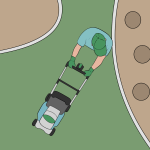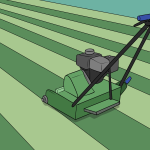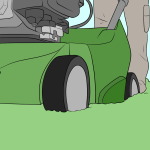Hydroseeding offers a cost-effective solution for homeowners looking to create a beautiful, healthy lawn. The national average for hydroseeding is $0.12 per square foot. So with a ¼ acre lot, you can hydroseed for $1,200. This is a fraction of the price you will pay for sod.
What we cover
ToggleShort Summary
- Hydroseeding is an effective and economical method of planting grass seeds with numerous advantages.
- Cost depends on various factors such as size, landscape, soil quality and climate.
- Alternatives to hydroseeding include sod installation and broadcast grass seeding, which have their own benefits and drawbacks.
Understanding Hydroseeding
Hydroseeding is a cost-effective seeding method that sprays a liquid mixture, covering a wide range of areas with less effort than other methods. This innovative approach to planting grass seed has gained popularity due to its numerous advantages, such as faster germination, better seed-to-soil contact, and fewer weeds.
But how much does hydroseeding cost, and what factors influence its pricing? Let’s dive deeper into the world of hydroseeding to find out.
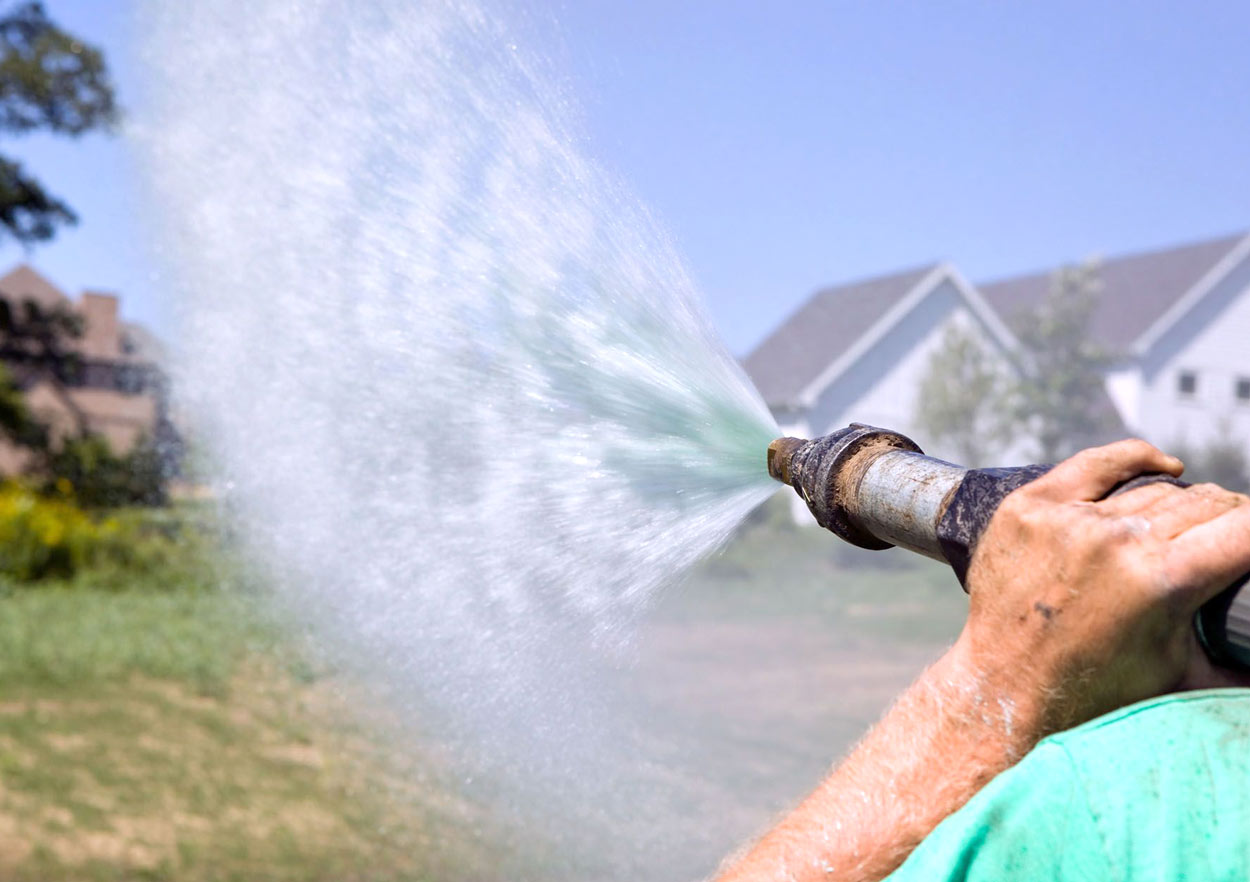
What is Hydroseeding?
Hydroseeding is a method of planting grass seeds by spraying a mixture of seed, mulch, fertilizer, and water on a pre-prepared soil base. This slurry forms a protective mat that guards the seeds from erosion and supplies the necessary nutrients for their germination and initial growth. Most professionals use a variety of tools for application which include hand-held sprayers, hydraulic pumps, and mechanical rotors.
This efficient method of seeding is suitable for a wide range of lawn sizes and types, making it a popular choice among homeowners and landscapers alike.
Advantages of Hydroseeding
Hydroseeding offers several benefits over traditional seeding methods. For starters, it is more economical, with an average cost of $0.12 per square foot. It provides more uniform coverage, is easier and faster to install, and is an effective erosion control measure.
The hydroseed fibers work together to form a mat. This yields high-quality grass that is healthier, greener, and longer-lasting than other grasses while generating fewer weeds and requiring less pesticide use.
Factors Influencing Cost
The cost of hydroseeding is impacted by a variety of factors, including:
- The size of the lawn
- The gradient and landscaping
- The soil quality
- Pre-hydroseeding preparation
- Climate and weather conditions
- Local labor and material costs
- Water availability
It’s essential to consider these variables when budgeting for hydroseeding to ensure you get the best value for your money.
Lawn Size and Hydroseeding Pricing
The size of your lawn has a direct impact on the cost of hydroseeding, as larger areas require more materials and labor. Most landscapers charge based on square footage, with prices typically ranging from $0.06 to $0.20 per square foot.
Understanding the pricing structure for hydroseeding can help homeowners better budget for their lawn project and make informed decisions.
| Low | High | |
|---|---|---|
| Per square foot | $0.06 | $0.20 |
| ¼ acre (10,890 sq ft) | $1,306 | $1,851 |
| ½ acre (21,780 sq ft) | $1,960 | $2,750 |
| 1 Acre | $2,613 | $4,356 |
Cost per Square Foot
The cost of hydroseeding per square foot can range from $0.06 to $0.20, with an average cost of $0.12 per square foot. However, the cost may be subject to fluctuation depending on certain factors, such as slope and the quality of the slurry.
Consider DIY hydroseeding. It can range anywhere between $0.25 and $0.35 per square foot. It is an economical option for lawn seeding. It’s important to weigh the costs and benefits of DIY versus professional hydroseeding to determine the best option for your lawn.
Cost per Acre
The hydroseeding per acre can vary between $2,000 and $6,000, depending on the slurry-mix ingredients and the hydroseeder utilized. Factors such as yard size, slope gradient, slurry material, and equipment are all considered when calculating the cost of hydroseeding per acre.
The average cost of hydroseeding per acre is $3,500, making it a more affordable option than other grass-seeding methods for larger lawns.
Bulk Discounts
Some professional landscapers offer bulk discounts for extensive landscaping projects, which can help homeowners save on hydroseeding costs. To inquire about potential bulk discounts, contact a professional hydroseeding service and discuss your lawn’s specific needs and size.
Taking advantage of bulk discounts can result in significant savings, making hydroseeding an even more cost-effective solution for your lawn.
Yard Conditions and Hydroseeding Costs
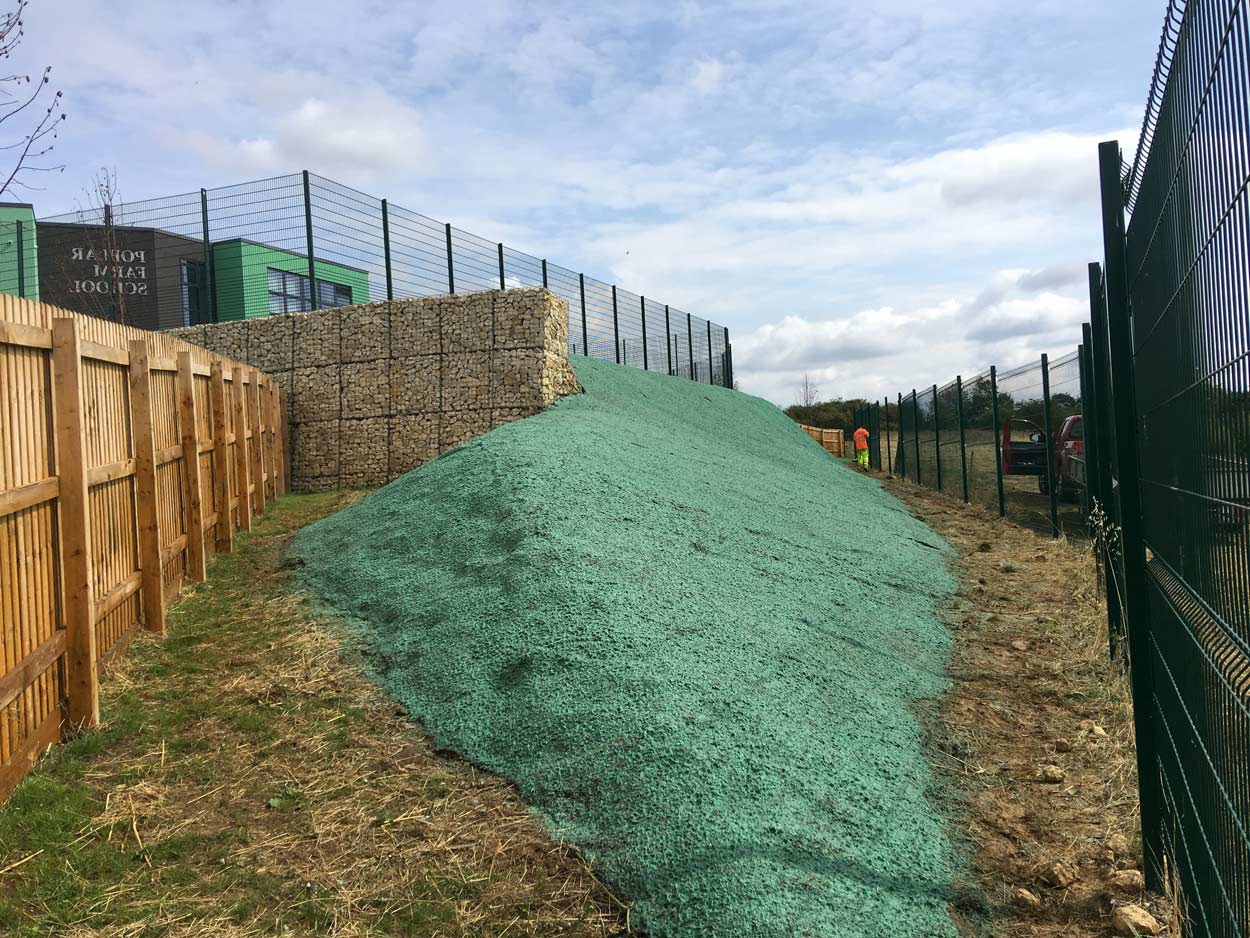
Various yard conditions can play a significant role in influencing the cost of hydroseeding. Factors such as yard slope, soil quality, and pre-hydroseeding preparation should be considered by homeowners when budgeting for their lawn projects.
Understanding these factors and how they impact the overall cost of hydroseeding can help you make informed decisions and ensure a successful outcome for your lawn.
Slope and Terrain
Yard slope has a direct impact on the cost of hydroseeding due to the increased materials and labor required for steeper lawns. Projects situated in hilly or mountainous areas can prove to be more expensive. Construction may become difficult, leading to additional costs.
To avoid increased rates resulting from a sloped yard, homeowners can opt for re-sloping the lawn before commencing the hydroseeding project, which may involve the expenditure of between $1,000 and $3,000 for the services of a professional.
Soil Quality
Soil quality is an important factor to consider when hydroseeding, as it can impact the growth and health of your lawn. Testing your soil prior to hydroseeding can help determine the pH balance and ensure the appropriate amendments are made to the slurry mix based on its acidity.
Enhancing the quality of soil can be achieved by incorporating organic matter, such as compost or manure, into the soil to improve its structure, nutrient availability, and water-holding capacity.
Pre-Hydroseeding Preparation
Proper preparation of your yard before hydroseeding is crucial for the success of your lawn. Homeowners should remove rocks larger than an one inch in diameter, eradicate crabgrass a week in advance, rake away dead debris, and abstain from using chemicals or fertilizers for at least a week before hydroseeding.
These steps can help ensure an optimal environment for the hydroseed slurry to take root and grow, resulting in a lush, green lawn.
Factors that influence Hydroseeding cost
Hydroseeding costs can also be influenced byl factors such as climate, local labor and material costs, and water availability.
Understanding how these factors impact the cost of hydroseeding in your area can help you budget appropriately and make informed decisions about your lawn project.
Climate and Weather
Climate and weather can play a significant role in hydroseeding expenses. In regions with arid, warm climates, the cost of hydroseeding can be higher, as the yard will require more regular watering. Conversely, in cooler, moist climates, hydroseeding can be more efficient and necessitate less frequent irrigation.
It’s essential to consider the climate and weather conditions in your area when planning your hydroseeding project to ensure optimal results.
Local Labor and Material Costs
Local labor and material costs can directly impact hydroseeding expenses. The availability of local labor, the cost of local materials, and the local market rate for hydroseeding services are all factors that can influence the overall cost of your hydroseeding project.
Researching local hydroseeding companies and comparing their rates can help you find the best value for your money.
Water Availability
Water availability can have a significant effect on hydroseeding expenses, as the high water content of the hydroseeding slurry mixture is essential for the process to be successful. In areas with water scarcity, landscapers may need to increase their rates to account for the limited water supply.
Be sure to consider water availability and its impact on hydroseeding costs when planning your lawn project.
DIY vs. Professional Hydroseeding
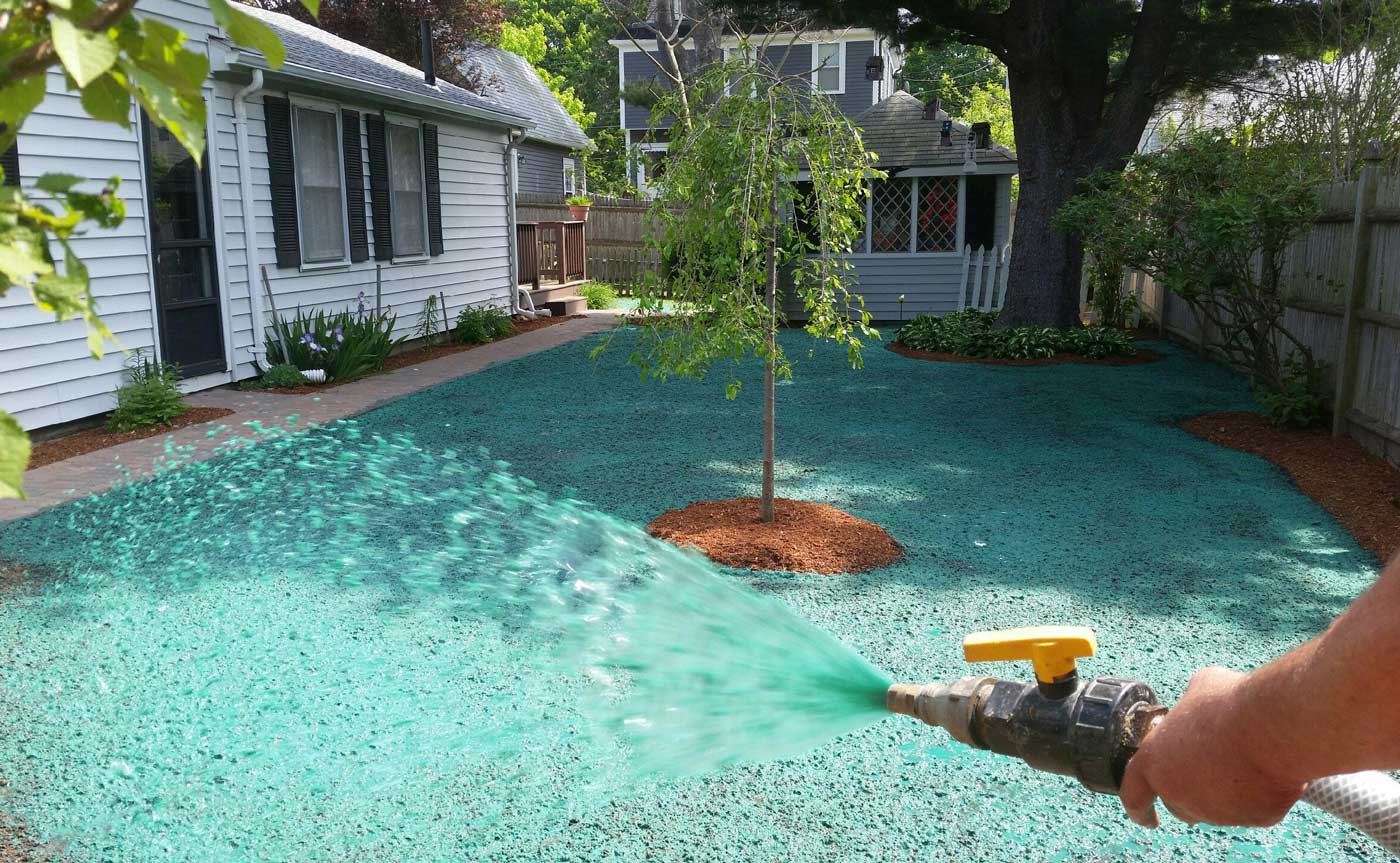
Homeowners have the option to choose between DIY and professional hydroseeding, each with its own set of pros and cons. DIY hydroseeding can provide cost savings but may require a significant investment in equipment and materials, as well as time and expertise.
Professional hydroseeding, on the other hand, offers expert knowledge and experience but can come with a higher price tag. Let’s delve deeper into the differences between DIY and professional hydroseeding to help you make the best choice for your lawn.
Equipment and Materials
DIY hydroseeding requires specialized equipment and materials, such as a hydroseeding machine, hydroseeding mulch, seed, fertilizer, and a stabilizing emulsion. The hydroseeding machine can be expensive. Its costs can range from $1,500 to $10,000. Alternatively, it can be rented for around $300 to $500 daily.
Cost of store-bought hydroseed varies significantly. It typically ranges between $0.20 to $0.50 per square foot. It’s important to weigh the costs of equipment and materials against the potential savings of DIY hydroseeding before deciding.
Time and Expertise
Undertaking a DIY hydroseeding project requires time and expertise to ensure the slurry is mixed and applied correctly. The intricacy of the landscape and the extent of the region to be sown can also affect the level of expertise required for DIY hydroseeding.
For homeowners with limited experience in lawn care and landscaping, the learning curve may be steep and the results may not be as successful as those achieved by a professional landscaping company.
Pros and Cons
DIY hydroseeding can provide cost savings, but it comes with the challenges of acquiring specialized equipment, learning the correct techniques, and dedicating the necessary time to complete the project.
Professional hydroseeding, on the other hand, offers expertise and quality but can be more costly. Ultimately, the decision between DIY and professional hydroseeding will depend on your budget, your level of expertise, and your confidence in your ability to achieve a successful outcome for your lawn.
Additional Lawn Services and Costs
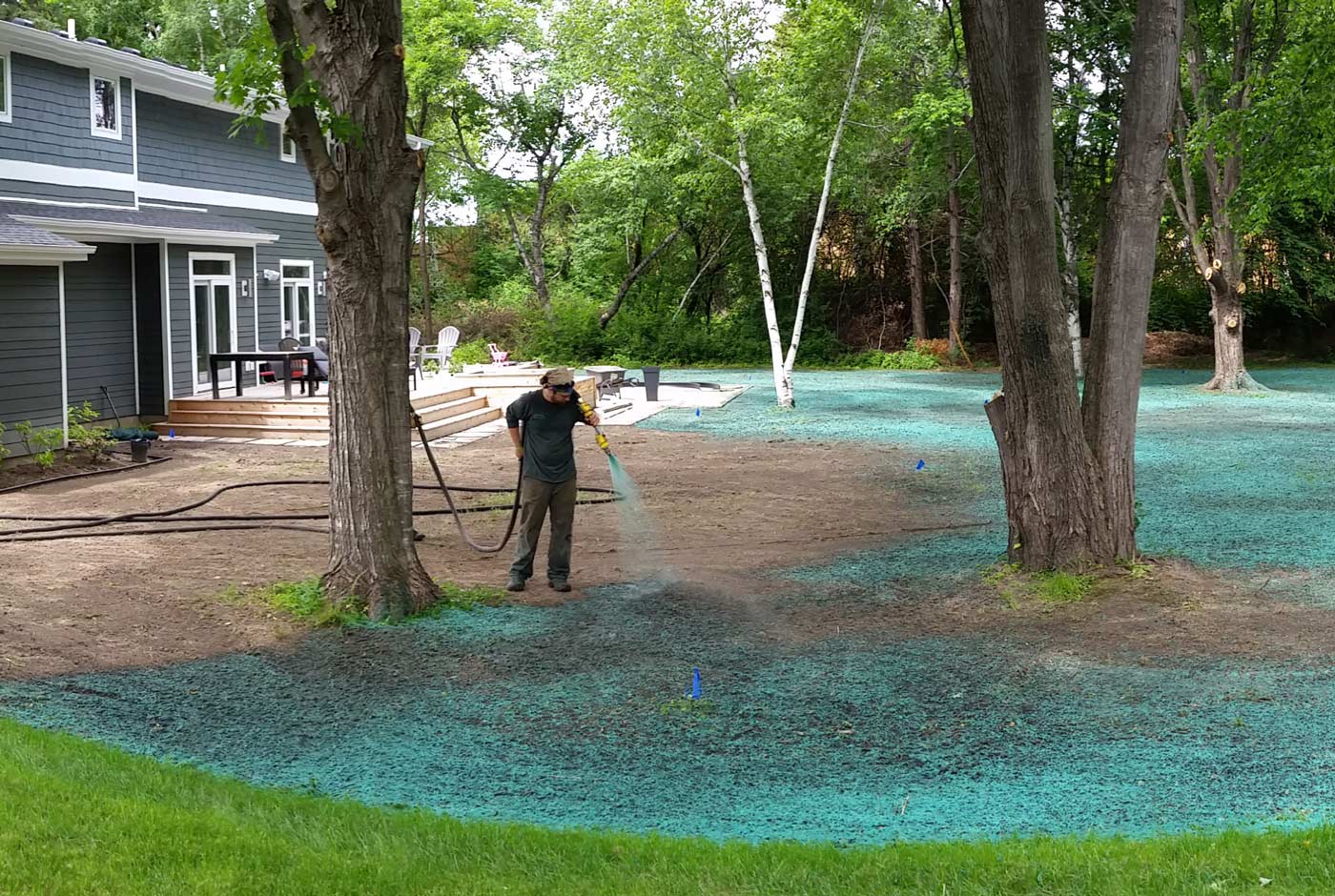
Homeowners may choose additional yard services to enhance the look and durability of their lawn after hydroseeding. Services like mulching, weed removal, leaf removal, mowing, and fertilization can help maintain the health of your lawn and ensure it remains lush and green.
These services come with their own costs, which should be factored into your overall lawn care budget.
Soil Testing
Before hydroseeding, it’s essential to test your soil to determine its pH balance and make any necessary adjustments to the slurry mix based on its acidity. Soil testing can also help identify any nutrient deficiencies or imbalances, allowing you to select the most suitable fertilizer for your lawn’s needs.
Soil testing can be done using DIY kits or by consulting a professional landscaper.
Fertilization
Fertilization is an important aspect of lawn care after hydroseeding to ensure the growth of healthy, vibrant grass. It is recommended to fertilize a hydro-seeded lawn three to five times per year. This will help the lawn stay healthy and lush.
The average cost of fertilizing a hydroseeded yard is $380, with prices ranging from $80 to $400 depending on the size of your lawn and the specific fertilization services required.
Lawn Maintenance
Maintaining your lawn after hydroseeding is crucial for its long-term health and appearance. Lawn maintenance services such as mowing, leaf removal, and weed control can help keep your lawn looking its best.
The cost of lawn maintenance can range from $30 to $206, depending on the services required and the size of the lawn. By investing in regular lawn maintenance, you can ensure that your newly hydroseeded lawn remains lush and green for years.
Hydroseeding Alternatives
While hydroseeding offers numerous benefits, it’s important to consider alternative grass-seeding methods to determine the best option for your lawn.
In this section, we’ll explore sod installation and broadcast grass seeding as alternatives to hydroseeding, comparing their costs, benefits, and drawbacks to help you make an informed decision.
Sod Installation
Sod installation involves laying down pre-grown grass on the lawn, providing a fast and easy way to obtain a lush, green lawn. Sod installation costs vary significantly. Prices per pallet could range from $150 to $450, or $0.35 to $0.85 per square foot, not including installation fees.
While sod installation offers the advantage of an instant lawn, it is generally more expensive than hydroseeding and may not be the best choice for homeowners on a tight budget.
Broadcast Grass Seeding
Broadcast grass seeding is a more cost-effective option than sod installation, involving the distribution of grass seed across the lawn, either by hand or mechanically. It is simpler, faster, and easier than traditional row sowing and is most suitable for plants that do not require singular spacing or that can be thinned out later.
Although it requires a longer time to observe results compared to hydroseeding, broadcast grass seeding is the most widely utilized grass seeding technique in the United States due to its simplicity and economical cost.
Summary
In conclusion, hydroseeding offers a fast and affordable solution for homeowners looking to create a healthy, uniform lawn. Prices vary based on factors such as yard size, location, and lawn conditions, but with proper planning and consideration, hydroseeding can be a cost-effective option for many homeowners. Lawn care service platform LawnStarter offers hydroseeding cost quotes in minutes and online management, making it easier than ever to achieve the lush, green lawn of your dreams.
FAQ's
Overall, hydroseeding is worth the money. It is faster than traditional seeding and yields a better result.
With some patience and regular maintenance, you can have a healthy, beautiful lawn in a relatively short period of time.
On average, it costs between $2,000 to $6,000 to hydroseed a 10,000 square foot lawn, depending on the slope and quality of your slurry. The cost per square foot ranges from $0.06 to $0.20.
With proper application, 500 gallons of hydroseed is estimated to cover approximately 5,000-7,500 square feet. This substantial area can be used to revitalize lawns, hillsides, and even large commercial spaces.







